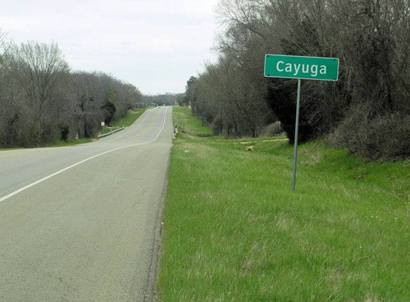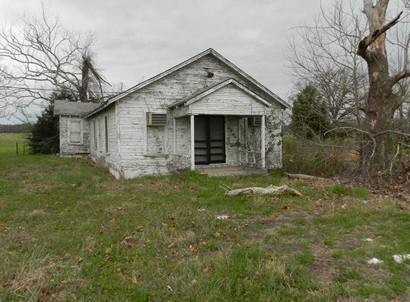|
|
 |
History in
a Pecan Shell
The communities
along the Trinity River (before it became unnavigable in the early
1870s) enjoyed a brief period of prosperity. One of these towns was
a place called Wild Cat Bluff. The roughhewn community gave
way to a nearby up-and-coming village which would, in time, become
Cayuga.
In 1894 a post office was applied for. The postmaster, perhaps feeling
nostalgic for his hometown in New York, submitted the name Cayuga.
Besides his duties as postmaster, he also operated a steam-powered
barge on the river, shipping cotton
for area farmers.
G. W. Tuggle, (chief justice of Anderson
County) and his wife donated land for the first community school
in 1860. It managed to survive into the 1920s when it was moved to
a different location – and then moved again to its final home off
FM 59.
Cayuga sat for many years, content in its relative isolation. The
century turned, the boll
weevil came and the Great Depression arrived. Just as people were
starting to notice how bad things really were, oil was discovered.
From a population barely worth reporting, Cayuga grew to 1,000 people
by 1936 –served by as many as fifteen businesses. Prosperity too didn’t
stay long. WWll
came and the oil business slowed. Soon Cayuga was back to a few hundred
residents.
A slow decline set in and by the early 1970s, there were only 52 people
left. Large projects, like the building of prisons and the Richland-Chambers
Creek Reservoir (nearby) helped provide employment. Bolstered by discoveries
of lignite, the population in the region increased to around 700 (late
1980s) but the official count of Cayugans remained officially at 56.
The 2000 census reported 200 residents. By 2010, population was estimated
to be 137. |
 |
| Texas
Escapes, in its purpose to preserve historic, endangered and vanishing
Texas, asks that anyone wishing to share their local history, stories,
landmarks and vintage/historic photos, please contact
us. |
|
|

 Texas
Gulf Coast
Texas
Gulf Coast East
Texas
East
Texas Central
Texas North
Central
Texas North Central
Texas South
Central
Texas South Texas
Panhandle
Texas
Panhandle South
Texas
South
Texas Texas
Hill Country
Texas
Hill Country West
Texas
West
Texas Texas
Ghost Towns
Texas
Ghost Towns Texas
Counties
Texas
Counties